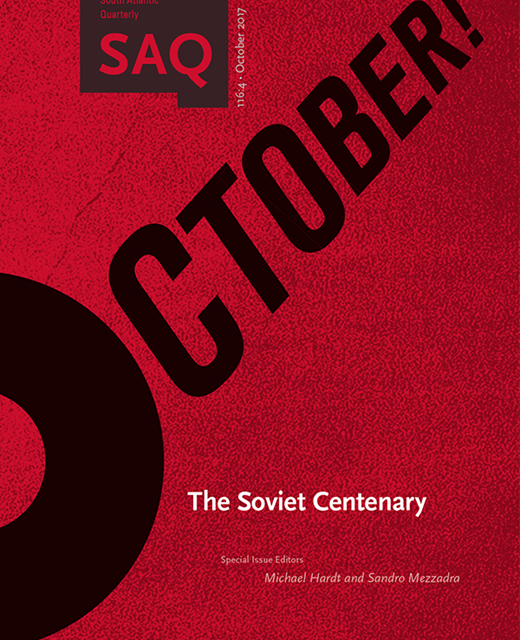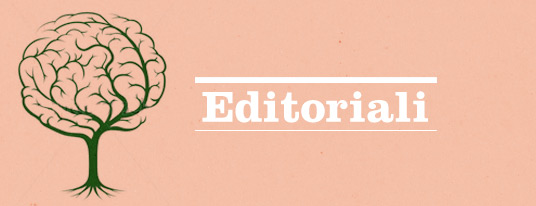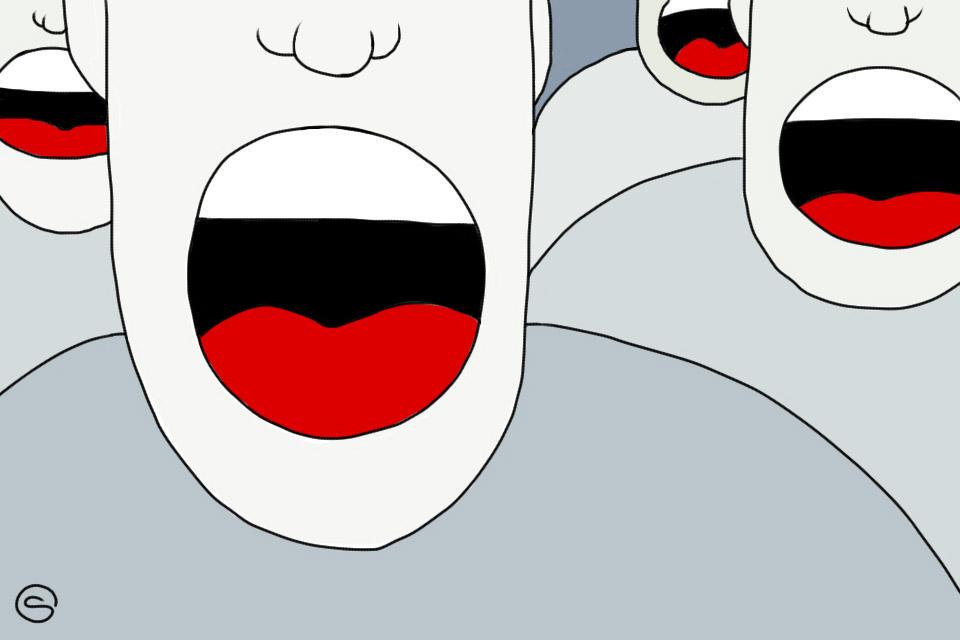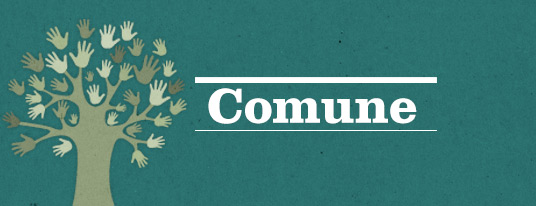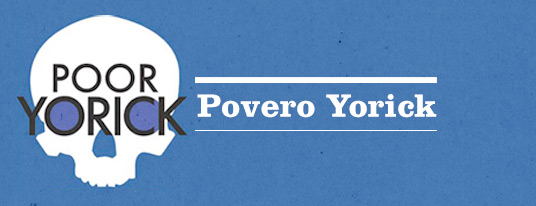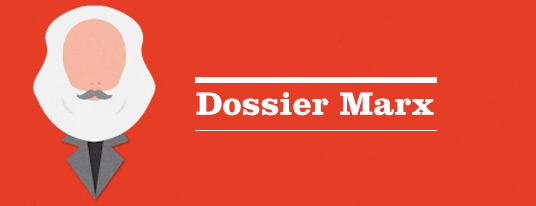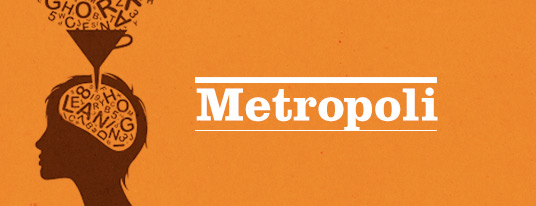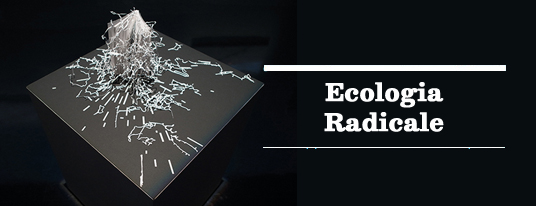di MICHAEL HARDT & SANDRO MEZZADRA.
(è stato pubblicato da pochi giorni il nuovo fascicolo della South Atlantic Quarterly, vol. 116, n.4 – October! To commemorate the Future. – numero curato da Michael Hardt e Sandro Mezzadra e dedicato a riflessioni sul tempo attuale alla luce della Rivoluzione. Pubblichiamo qui, grazie alla cortese autorizzazione della rivista e dell’editore, l’introduzione dei curatori: nei prossimi giorni, pubblicheremo i saggi di M. Hardt, T. Negri, e G. Amendola – EN).
The best way to commemorate October 1917 is by looking forward not back – to remember the future. We have no desire to continue drawing up balance-sheets of the Soviet experience, assessing its successes and failures, identifying when the revolution went wrong, defending it from detractors, denouncing those who betrayed it, or debating theories of “totalitarianism.” The time for all that has passed. The ideological clashes of the cold war – which for decades both elevated and obscured all of those issues – and even the post-cold war are now, thankfully, behind us.
What remains important, instead, is to appreciate how the rupture opened by the October Revolution revealed new horizons for political thought and practice, making what was previously unthinkable the order of the day. It was the source of great theoretical and political innovation and, indeed, vast territories of that unknown universe illuminated by the October Revolution still remain to be explored and experimented. But the revolution primarily serves us today as a testament to the continuing potential of political rupture. It is a testament to the fact that a lightning bolt can shatter the continuum of historical time, not only shifting the course of history but also instituting a new calendar, a new temporality (Benjamin: 395). That same lightning bolt can also scramble established geographies from the bottom up, instituting a new world map that no longer has Europe at its center, bringing together regions of the world that had previously seemed distant, as if great tectonic plates had shifted over the course of days rather than millennia. It is a globalizing event or, rather, a remaking of the globe.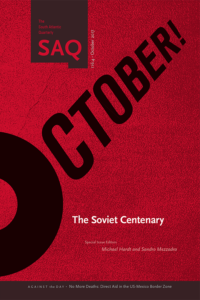
Most important are the effects of the revolutionary lightning bolt on the political imagination. It is realistic to demand the impossible because such events transform what used to be thought impossible into entirely realistic and even necessary demands. And, furthermore, the transformative powers of the event carry beyond the impossible to the unthinkable, opening new and vast horizons for the political imagination, allowing us to desire what we previously could not even imagine. That is where the highest power of the event lies.
We are not advocating, of course, to replay the political strategies or resurrect the political forms of 1917 – for instance, to create a vanguard communist party to play the part of the Bolsheviks like those historical re-enactors who dress up on weekends in Union and Confederate uniforms to replay U.S. Civil War battles. We take the centenary as a reminder, instead, that such a radical political rupture remains possible, even when, like today, conditions do not seem propitious. That does not mean that we should sit back and wait for its second coming (or third or fourth). Revolutionary events do not arrive from the outside. We need to explore what it would mean today for an event the magnitude of the October Revolution to open new potential for liberation and understand, moreover, what are the conditions necessary to bring it about.
Against the day
It may seem imprudent to talk about revolution today when right-wing movements and governments are on rise and even the specter of fascism is materializing in countries throughout the world. Keep in mind, though, that in the years prior to the October Revolution the forces struggling for liberation in Europe were at a low point. Europe was swept by war, the belle époque had ended up in “storms of steel” and mass slaughter in the trenches. Nationalism was the political religion of the day. While in Germany intellectuals were praising the “ideas of 1914” in contrast to those of 1789, in France major figures such as Emile Durkheim stigmatized the German “mentality” as responsible for the war. Powerful processes to reorganize capitalist society, underway since the 1890s, were accelerated by the “total mobilization” for war. Nation, state, and capital seemed destined to dominate the future. At the same time, the labor movement and the forces of internationalism, which had shone prominently at different moments through the last half of the nineteenth century throughout the continent, descended into darkness. The vote of the German Social Democratic Party on August 4th, 1914 to approve war credits, which paved the way for Germany to go to war, symbolized the end of internationalism and a deep crisis of the labor movement.
 Meanwhile something unprecedented – and completely against the day – was emerging in the East. Through the course of 1917, from the first demonstrations in January on the anniversary of the “bloody Sunday” of 1905 to the February revolution and the fall of the Czar, from the uprising in Petrograd in July to the Bolshevik October, the rhythm of an uncontainable revolutionary movement was driven by mass mobilizations and very simple slogans, such as “bread, peace, and freedom,” and “all power to the soviets.” The movement spoke a new internationalist language, and the October revolution was widely perceived (by friends and enemies alike) as the historic success of a project of collective liberation led by workers and soldiers, peasants and commoners. “For the first time in human history,” Lenin wrote in early 1918, “a socialist party has managed to complete in the main the conquest of power and the suppression of the exploiters, and has managed to approach directly the task of administration” (Lenin 1951a: 452). This radical novelty opened up a completely new political horizon.
Meanwhile something unprecedented – and completely against the day – was emerging in the East. Through the course of 1917, from the first demonstrations in January on the anniversary of the “bloody Sunday” of 1905 to the February revolution and the fall of the Czar, from the uprising in Petrograd in July to the Bolshevik October, the rhythm of an uncontainable revolutionary movement was driven by mass mobilizations and very simple slogans, such as “bread, peace, and freedom,” and “all power to the soviets.” The movement spoke a new internationalist language, and the October revolution was widely perceived (by friends and enemies alike) as the historic success of a project of collective liberation led by workers and soldiers, peasants and commoners. “For the first time in human history,” Lenin wrote in early 1918, “a socialist party has managed to complete in the main the conquest of power and the suppression of the exploiters, and has managed to approach directly the task of administration” (Lenin 1951a: 452). This radical novelty opened up a completely new political horizon.
A new geographical imaginary
The Bolsheviks, of course, were primarily facing West, looking to the Paris Commune as a precedent for a victorious workers’ insurrection and to Germany, the historical stronghold of the labor movement in Europe, as the primary source for the propagation of revolutionary theory and activity. And, more generally, as Susan Buck-Morss argues, the mentality of Bolsheviks was deeply embedded in the modernizing project dictated by the dominant line of Western European thought (Buck-Morss 2000: 68). And yet, despite the fact that many Russian revolutionaries imagined Petrograd as residing on a line emanating from Berlin and Paris, the revolution completely rearranged the coordinates of political geography.
Antonio Gramsci could see from the relatively peripheral position in Italy that the October Revolution was not so much a realization of Marx’s vision but a revolution against Das Kapital and, specifically, against all assumptions of linear historical development whereby the dominant countries will lead and the others follow in their tracks (Gramsci 1977). The fact that October took place in what was considered a backward country on the border between West and East had momentous implications for the geographical imagination of the day. While from across the Atlantic, especially in the course of the Great War, the rise of the United States dramatically shifted the distribution of power in the capitalist world system, the October revolution signaled the emergence of a completely different world, one oriented primarily outside of Europe, one in which imperialism became a central object of Marxist theory and in which combatting colonialism became an ineluctable and even central task for socialist struggles. 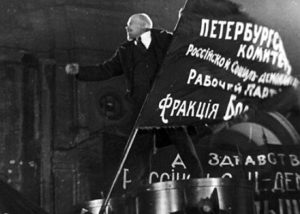
The Congress of the Peoples of the East, held in September 1920 in Baku (present day Azerbaijan) was one symptom that a new geographical imagination had emerged.[1] Grigory Zinoviev presided over the encounter together with other well-known communist figures such as Karl Radek, and Béla Kun. And the participants formed, as Zinoviev remarked, a heterogeneous, multi-colored composition: the major part were intellectuals and activists from former Russian colonies, Turkey, Armenia, and Persia, and there were representatives too from India, China, and Japan. Together they sought to orient the potential opened by the October Revolution toward a global revolution against colonial and imperialist rule. In Baku the circuits of internationalism were being rewritten outside the European sphere in an anti-colonial key. In his closing remarks Zinoviev recognized that “the peoples of the East” had good reason from decades of experience to distrust European and especially Russian promises, and indeed Soviet policies in later decades certainly did distort international cooperation into another kind of imperialist rule and sought to “Russify” populations under its control. But that does not negate the fact that a door to a new internationalist terrain had already been opened. The writings and activities of Manabendra Nath Roy and Mirsaid Sultan-Galiev, for instance, are testaments to how the October Revolution echoed across Asia and the Middle East. And on the other side of the globe, José Carlos Mariátegui, through continuous journalistic and theoretical interventions, explored how the events in Russia transformed political possibilities for Peru and Latin America more generally, as Martín Bergel’s essay in this volume makes clear.
Although the Russian revolution had a profound impact on the politics of anti-colonial and popular movements in many parts of the world, this impact was far from linear: the politics of the Comintern often created and exacerbated divisions and, particularly in the age of Stalin, the national Soviet interest under the aegis of “socialism in one country” more often than not prevailed over internationalist solidarity. The Soviet actions during the Spanish Civil War, as Kathy Ferguson’s essay in this volume notes, demonstrated some of the criminal outcomes to which this lead. When we speak of a new “geographical imagination” spurred by the October events in Russia, however, we have something else in mind: the scrambling of the global geographies of the time and the widening of the space of politics that for the first time made peoples and movements outside Europe and the West crucial protagonists of proletarian internationalism. Even such a specific history as the one of the encounter between African-Americans and communism in the 1920s and 1930s (see for instance Baldwin 2002), which made an important contribution to the radicalization of the black movement in the U.S. and to the spread of an internationalist look within it, is part of the scrambling of geographical coordinates produced by the October Revolution.
The revolutionary event
Although we recognize the October Revolution, as we said, as an unprecedented event, a rupture in the continuity of historical development that opened up a new field for political experimentation, challenging the boundaries of the political imaginary and of what was considered politically possible even in revolutionary theories, we are wary of contemporary theories of the event that tend to obscure the conditions that underlie the production of such historical ruptures. Political events seem to come from the outside, like miracles, but they only so to those who are not working inside to bring them about. “Miracles,” Lenin writes, just before his arrival in Russia in April 1917, “do not happen in nature and history.” Like Spinoza, he attributes belief in miracles to an ignorance of causes. “[E]very abrupt turn in history,” he continues, “and this applies to every revolution, presents such wealth of content, unfolds such unexpected and specific combinations of the forms of struggle and the alignment of forces of the contestants, that to the lay mind there is much that must appear miraculous” (1951d: 583). Revolutionary events rest instead on a vast accumulation of political activity, which has deposited layer upon layer like geological sediment, putting heavy pressure on the current order and creating a solid foundation of a new political terrain. This is not to say that political history is linear and, even less, that it is predictable. No event results merely from the accumulation of past struggle, and there are no guarantees. Every event is a leap into the unknown, full of risk, but in order to leap you need solid footing. Genuine breaks with the past, are only possible because of the previous accumulation.
Gramsci, for one, understood the October Revolution as being the result of the “collective will” that had built up among the Russian proletariat and the “Machiavellian” will exercised by the Bolshevik party to seize the occasion to organize the insurrection. The writings of Lenin during the course of 1917 similarly are dominated by the attempt to grasp and further this dialectic – starting from his emphasis on the need for the Bolsheviks to forge “an ability to adapt ourselves to the special conditions of Party work among unprecedentedly large masses of proletarians who have just awakened to political life” (1951e: 14). Trotsky too understood the “art of insurrection” in these same terms, grasping the existing social and political conditions to make possible the spark (1957: vol. 3, 167-199).
Once the event is conceived in its materiality it is easy to understand in which sense an event like the October Revolution could open up a new continent of what was considered politically possible. It challenged, as we noted earlier, the Eurocentric development of Marxism since the dispute surrounding “revisionism” in the 1890s, putting into question the linear and progressive image both of capitalist development and of the struggle for socialism that had dominated previous debates. And above all, we repeat, it contradicted the main trends of the age, concretely demonstrating through the sheer fact of the victory of the revolution that it was possible to break the rule of capital and to construct a future beyond it. This victory, which even Victor Serge, a victim of Stalinism, claimed as the main legacy of October in his memoir, opened up radically new spaces for a political imagination that was far from being contained by the Bolshevik party in Russia and broke free from traditional restraints elsewhere in the world (Serge 2012, 430).
One task today, then, is to grasp how broad range of struggles – from those against racism, patriarchy, homophobia, and transphobia to struggles for democracy, from the struggles of migrants to the movements of the poor as well as old and new forms of labor struggle – can point beyond mere protests and form a kind of mosaic or constellation oriented toward a future transformation. Indeed, viewing events as miraculous – and, hence, waiting for them to arrive, in a kind of rehearsal of what Lenin (1951f: 257-258) called “tail-ism” – makes it all the more difficult to struggle in the myriad of ways necessary to create their conditions. When the moment comes, though, suddenly all varieties of partial and micropolitical struggles, which had seemed disparate and unrelated, click together to form a powerful assemblage. That is when the conditions of the event are in place.
The conditions of rupture today
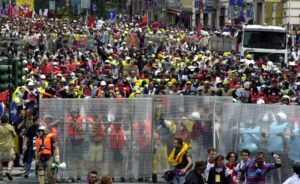 Parallels between the current conjuncture and the one that led to World War One abound. Our present is similarly characterized by processes of global transition that are far from smooth, with catastrophic dangers looming at every turn. Rising nationalist sentiments (often accompanied by racism) create frictions across the globe that continually risk catching flame in mass military conflict. The financial crisis that started in the U.S. in 2007/8 continues to course through the bloodstream of the capitalist world system, periodically wreaking havoc in different regions. Neoliberalism seems to have abandoned altogether its seductive promises of global prosperity, presenting instead naked austerity policies combined with nationalist, authoritarian, and even protectionist ideologies. From India to Turkey, from the Philippines to Egypt, from Argentina and Hungary to the U.K. and the U.S. an aggressive right seems to be hegemonic in the management of the global political cycle that was opened up by the crisis. This does not mean the end of capitalist globalization, as some claim, but it does indicate that a momentous reorganization of its spaces and direction is underway. The implications of this shift in terms of a dramatic restriction of freedom and equality are apparent today, and migrants experience them in the most acute way, in the U.S. and Europe most visibly but also in many other countries including Argentina and South Africa.
Parallels between the current conjuncture and the one that led to World War One abound. Our present is similarly characterized by processes of global transition that are far from smooth, with catastrophic dangers looming at every turn. Rising nationalist sentiments (often accompanied by racism) create frictions across the globe that continually risk catching flame in mass military conflict. The financial crisis that started in the U.S. in 2007/8 continues to course through the bloodstream of the capitalist world system, periodically wreaking havoc in different regions. Neoliberalism seems to have abandoned altogether its seductive promises of global prosperity, presenting instead naked austerity policies combined with nationalist, authoritarian, and even protectionist ideologies. From India to Turkey, from the Philippines to Egypt, from Argentina and Hungary to the U.K. and the U.S. an aggressive right seems to be hegemonic in the management of the global political cycle that was opened up by the crisis. This does not mean the end of capitalist globalization, as some claim, but it does indicate that a momentous reorganization of its spaces and direction is underway. The implications of this shift in terms of a dramatic restriction of freedom and equality are apparent today, and migrants experience them in the most acute way, in the U.S. and Europe most visibly but also in many other countries including Argentina and South Africa.
Is it possible to imagine today such a radical event as the October revolution? The world has dramatically changed, and so too the capitalist mode of production. This is something like a truism. No Winter Palace is in sight. Moreover, a century of struggles across the world has made it impossible for anything like the Bolshevik model of party organization to articulate and express the multiple processes of subjectivation that make up the contemporary working class – let alone the whole range of social struggles. And yet we still need ruptures and events in order to open up new frontiers of our political imaginary. There is no need to go back to the Paris Commune or to the global uprisings of the 1960s to grasp the relevance of this articulation between historical rupture and theoretical innovation. Theory can locate the conditions for a rupture, it can foreshadow its direction and its subjective composition, but in the experience of rupture there is always an excess that challenges theory and often points beyond its blind spots and impasses. We have witnessed such scenes of theoretical innovation repeatedly in recent years. The experiences between Seattle in 1999 and Genoa in 2001, when the birth of a new “global” movement opened up new continents for the critical investigation of globalization was one such laboratory of innovation. Another emerged with the uprisings in Mexico, Ecuador, Argentina, and Bolivia between the 1990s and the early 2000s, which laid the basis for the emergence of new “progressive” governments in Latin America – an extraordinary, albeit contradictory field of experimentation for social transformation well beyond the region. Similarly, the cycle of occupations and encampments at the beginning of this decade from Tahrir to Taksim, passing through the “indignados” in Spain, Syntagma Square in Athens, Occupy in the United States, and many other points, opened a new fields of theoretical innovation, particularly with regard to what democracy could be.
Such experiences do not share much with the October revolution, one might object. Fair enough. We are nevertheless convinced that some of its aspects retain a profound actuality and have been renewed, transformed, and revived by struggles and popular politics in many parts of the world over the last decades. They are going to play crucial roles in the production of any historical rupture conceivable today. And, indeed, we are living in a global context that makes such an event all the more urgent.
What would be the conditions for an event that runs counter to the mainstream of our age, as the October revolution did a century ago? There is no shortage of struggles and movements in the world today, some of which continue in part the projects of those of recent years that we just mentioned. Migrants mobilize against nationalist backlash, people of color protest against white supremacy in its various forms, women’s movements are sweeping many countries and regions, movements of the poor nurture solidarity economies, environmental activists often in alliance with or under the leadership of indigenous groups confront climate change, labor struggles abound, and the list could go on. Each of these alone, especially when isolated in only one country or region, seems powerless against the dominant forces. But these heterogeneous and powerful struggles could, if woven together internationally, compose the material fabric that allows imagining an event powerful enough once again to open new frontiers of our political imaginary.
With the October Revolution in mind, then, we will explore three domains that resonate with its legacy and maintain for us today a profound relevance.
State and party as a problem
With regard to the political role of the state and the party, the centenary forces first us to measure our distance from 1917. Lenin takes for granted that “the basic question in any revolution is that of state power” (1951c: 20). For us today, the issue of the party and the taking of state power is a real question – sometimes even a problem – rather than the solution. This does not imply any blanket refusal of the party form or even a reluctance to take state power. There are indeed a variety of important experiments in recent years that have tested these waters: from the experiences of progressive governments in Latin America we just mentioned to Podemos and Syriza in Europe, and from the Bernie Sanders campaign to municipal governments in Spain. These are experiments that, in one way or another, emerged out of powerful social movements and have attempted, sometimes in limited ways, to maintain a space or role for the movements.
This is not the place to evaluate these experiences. Before doing that, moreover, one would have to understand the dramatic transformations that have reshaped the state over the last decades and across diverse geographical scales. Those transformations are highlighted, in fact, if we take as a point of reference the state that Lenin had in mind. The recurrence of mechanical metaphors in Lenin’s writings on the state demonstrates that he was not only working in the wake of Marx’s well-known dictum that “all revolutions perfected this state machine instead of smashing it” (Marx 1963: 122), but also following the mainstream of political and legal sciences of his time, typified by the work of Max Weber. Lenin placed great emphasis on administration. His notion of “state-monopoly capitalism,” with which he intended to grasp the new figure of capitalist development emerging out of the age of the Great War, was intended to shed light on the ability of the state to organize capitalism. The resulting process of “merging” of the state “with the all-powerful capitalist associations” had for Lenin “monstrous” implications for the “oppression of the working people by the state” (1951b: 199). For Lenin it was absolutely necessary to “take” the power of this state, a sovereign administrative machine, smashing the machine of its repressive apparatuses and developing in their stead the administrative capacities crucial for the transition to communism. The fact that the Russian revolution ended up building a state that was extremely oppressive and repressive should not obscure Lenin’s original project. And it was entirely calibrated upon a specific historical form of the state.
The state has not withered away with contemporary processes of globalization. It continues to perform important tasks in the organization of capitalist society at the national and global levels, but its role and position are completely different than the ones envisaged by Lenin with his notion of “state-monopoly capitalism” or, for that matter, by Social Democrats with their conception of “organized capitalism” or even by the operaisti who analyzed the “planner state.” The nature of the sovereignty of the state has been transformed as the state has been displaced from the center of capitalist rule, which has developed powerful devices of governmentality that work at the level of daily life well beyond the point of production. At the same time some of the most important operations of contemporary capital (most notably its financial operations) structurally exceed the scale of the nation state and deploy powerful constraints on each government. Under these conditions taking state power can definitely be one step in a political strategy of transformation, be it reformist or revolutionary, but it is by no means a sufficient condition for success.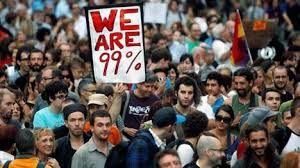
The same is true for the Bolshevik party, which was conceived by its founders as confronting a form of capitalist rule and a state completely different from the ones we face today. Antonio Negri argued along these lines in the 1970s that the genius of the Leninist party was to discover a kind of resonance between the existing organization of the proletariat in production and the structures of political organization. In other words, the centralized vanguard party was so powerful at the time because it corresponded to the centralized organization of the skilled industrial workers in the factory. The schemes of productive cooperation that workers already know pose the adequate structures of political organization. This does not mean that the Leninist solution can be translated to a different historical context – on the contrary. To take up Lenin’s procedure one has to study how productive cooperation is organized in contemporary society and then invent a political form that corresponds to its structures. And today, of course, one would have to take into consideration the terms of social production and reproduction well beyond the proletariat as traditionally conceived, well beyond the factory walls, and even outside of the paid labor force. That would be the challenge of taking up and reimagining a Leninist organizational spirit that is adequate to contemporary conditions.
We thus disagree, on the one hand, with those contemporary authors who, understandably frustrated by the inability of social movements like Occupy to generate lasting social transformation, conceive of forming a party and taking state power (often even in terms reminiscent of Lenin’s time) as the solution to our current political impasse or the weakness of the Left. And we also disagree, on the other, with those who maintain that the state and the party can have no role in liberation politics today. Our view, instead, is that state and party are problems that contemporary liberation politics have to address. What is urgently needed is discover the means to guarantee the continuity of autonomous movements and struggles that confront capitalist rule at the daily level and in all aspects of its operation. We certainly need to take stock of the long history of communist, socialist, and anti-colonial politics in which state and party have been conceived and practically constructed as the main actors of social transformation. Movements and struggles of the last decades seem to have come to terms with this history and claim a different politics, in which the state and the party can play a role but are far from having a monopoly on political transformation.
Dual power
Rather than focusing immediately on taking state power or on the party as the adequate vehicle for doing so, it is more useful to explore critically the soviet idea of a dualism of power.[2] As soon as he returned to Russia, in early April, Lenin wrote that “the highly remarkable feature of our revolution is that it brought about a dual power.” And he went on asking: “What is this dual power? Alongside the Provisional Government, the government of the bourgeoisie, another government has arisen, so far weak and incipient, but undoubtedly a government that actually exists and is growing – the Soviets of Workers’ and Soldiers’ Deputies” (Lenin 1951c: 20). Today the goal of creating a relatively stable second power composed of a series of autonomous counterpowers provides a framework for organizing the current varied set of antagonistic social struggles into a lasting and transformative political strategy.[3]
In the Russian experience, the soviets, as institutions of self-organization and self-government of workers, soldiers, and peasants, were the foundation of dual power. What characterizes the form and the action of the soviet, as Antonio Negri’s essay in this volume explains, is the combination of the economic emancipation of the working class and the political composition of self-government and democratic decision-making. The soviets aimed to organize workers’ and peasants’ knowledge to serve as the basis for the development of the revolutionary process in the realm of production.
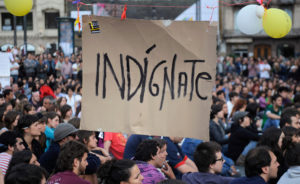 The global history of social and political struggles in the twentieth century and up the present provides a rich and heterogeneous archive of experiences analogous to the organization of soviets, most often without any reference to the October revolution. From communal forms of peasant and indigenous organization to workers’ councils, from neighborhood assemblies in Argentina in the wake of the 2001 uprising to the exercise of territorial counterpower by the Black Panthers in the U.S. or by the autonomous movement in Italy we can see how the “spirit of the soviet” has remained alive and traveled across the globe in various mutations. Furthermore, the movements that seized and occupied the squares of major cities in several countries from 2011 to 2013 presented powerful although “incipient” instantiations of the soviet under contemporary conditions. It now takes the form of metropolitan assemblies in which widely heterogeneous set of social subjects gather to deliberate and to forge institutions of self-government on the basis of social cooperation and struggle against dispossession and exploitation. These assemblies thus far have not risen to the level of dual power, as both their critics and the participants will quickly affirm. Key, however, is the fact that each of these experiences has gone beyond the level of protest and resistance against the dominant power structure to create, even if only briefly, an autonomous counterpower. The potential articulation of counterpowers alludes to the potential of a strategy of dual power.
The global history of social and political struggles in the twentieth century and up the present provides a rich and heterogeneous archive of experiences analogous to the organization of soviets, most often without any reference to the October revolution. From communal forms of peasant and indigenous organization to workers’ councils, from neighborhood assemblies in Argentina in the wake of the 2001 uprising to the exercise of territorial counterpower by the Black Panthers in the U.S. or by the autonomous movement in Italy we can see how the “spirit of the soviet” has remained alive and traveled across the globe in various mutations. Furthermore, the movements that seized and occupied the squares of major cities in several countries from 2011 to 2013 presented powerful although “incipient” instantiations of the soviet under contemporary conditions. It now takes the form of metropolitan assemblies in which widely heterogeneous set of social subjects gather to deliberate and to forge institutions of self-government on the basis of social cooperation and struggle against dispossession and exploitation. These assemblies thus far have not risen to the level of dual power, as both their critics and the participants will quickly affirm. Key, however, is the fact that each of these experiences has gone beyond the level of protest and resistance against the dominant power structure to create, even if only briefly, an autonomous counterpower. The potential articulation of counterpowers alludes to the potential of a strategy of dual power.
It is important to note that dual power as conceived by the Soviets was a temporary and unstable arrangement, a kind of anomaly that had to be superseded as quickly as possible. Trotsky, for instance, maintained that dual power “does not presuppose – generally speaking, indeed it excludes – the possibility of . . . [an] equilibrium of forces” (1957: vol. 1, 207). Lenin’s understanding of the concept, likewise, is based entirely on the political wager that soon will arrive the occasion to overthrow the provisional government and establish a “dictatorship” of the soviets. “Two powers cannot exist in a state,” he wrote in September 1917. “One of them is bound to disappear” (Lenin 1951e: 28). The dualism of power in the Russian revolution, “unparalleled in history in such a form,” was for him a limit condition and a limit concept for political theory. A similar emphasis on the need to overcome the dualism of power is a defining feature of the concept throughout the dominant line of twentieth century revolutionary Marxism. Positive instances of that can be found in Gramsci’s writings in 1919-20 on workers’ councils as an emerging second power and a potential basis for a new, “socialist state” or the many experiences of guerrilla warfare (starting with Mao) where the institution of “red bases” was thought of as a provisional step toward seizing power (see Guastini 1978; Zavaleta Mercado 1974).
Today, in contrast, we need to reformulate the strategy of dual power as a relatively stable political framework. As we said, one weakness of even the most inspiring political and social movements of recent years is that they are short lived. The movements need to discover the means both to become lasting and to form dynamic coalitions across different social domains and internationally. It is not necessary, and in fact would be destructive, to try to unify the various axes of social struggle today based on gender, class, race, sexuality, ethnicity, ecological concerns, and more. Instead, a relatively stable political framework that articulates together the diverse political dynamics of struggle, transformation, and governance, establishing a lasting assemblage of counterpowers, is the most effective means of strengthening the existing movements. This is how best, it seems to us, to address the state and party as problem, as we outlined in the previous section.
A strategy of dual power today has to be conceived in terms of an assemblage of counterpowers, moreover, because the unity of state power and sovereignty, which was taken for granted in Lenin’s conception, has been transformed by global neoliberal processes creating plural structures of law, governance, and governmentality. This pluralization of governmental structures and policies responds, in some respects, to the need to govern a deeply heterogeneous and often unruly set of cooperating and productive social subjectivities. A strategy to contest these emerging forms of governance and their enmeshment with operations of capital must necessarily search for processes of political organization and articulation that valorize the diverse composition of contemporary social struggles.
Such a renewed theory of the dualism of power could provide a political formula for rethinking the question of transition, which has proven so intractable in the communist tradition. In particular, it allows thinking of transition, which means of the opening up horizons of social life beyond capital, as a non-linear process, where specific victories and achievements result in the establishment and entrenchment not simply of rights but first of all of material structures of power and forms of life that, in turn, make further advances in the field of social struggle possible. The dualism of power that we have in mind thus requires a notion of governance that is rooted within a fabric of counterpowers from which it draws its force without putting into question their autonomy. It aims at politicizing social cooperation, through institutions that are capable of both organizing struggles, enabling their confluence and mutual empowerment, and foreshadowing different forms of life – to combine social and economic emancipation with political liberation, as we saw for the form of the soviet.
It should be obvious that when we say dual power the two powers in question are not and cannot be homologous. In this sense it remains true today that a dualism of power, to refer back to Trotsky, does not express an equilibrium of forces, either in social or constitutional terms. Even when state power is seized by political forces engaged in a project of radical transformation the wide array of political forms and institutions composing the “second” power must retain their autonomy and continue to work according to logics different from the ones permeating the ruling institutions – from representation to bureaucracy. It is, as Lenin says, “a power entirely different from that generally existing in the parliamentary bourgeois-democratic republics of the usual type still prevailing in the advanced countries of Europe and America” (1951c: 20). This difference is key to the political productivity of the dualism of power, which allows it to be considered “a thoroughly expansive political form,” to quote Marx’s description of the Paris Commune, which was basically different in his assessment from “all the previous forms of government” that “had been emphatically repressive” (Marx 1988: 60). We think of the development, rooting, and entrenchment of a “second” power, instituted through struggles and social mobilization, as the crucial political element that can make a political form “expansive,” holding in check the “repressive” aspects that pertain to the working of established state institutions. But far from being limited to this control function the “second” power plays a leading role in developing the strategy as well as in prompting and deepening the process of social transformation.
From private property to the common
A third aspect of the legacy of the October revolution that we need to revisit today is the critique of private property. Today neoliberal practices of privatization and commodification are erecting ever higher barriers of exclusion and forms of violence. We have to find ways to escape from under the increasing weight of the rule of private property. This does not mean, however, resurrecting the twentieth century forms of “socialist property” mediated by the state, in which the state claims to represent the “whole socialist society” and hence becomes proprietor in terms that mirror classical bourgeois theories of property (see Venediktov 1953). As Giso Amendola’s essay in this volume demonstrates, the Soviet legal scholar Evgeny Pashukanis preemptively criticized the notion of state property already in the 1920s. Fortunately private property and public property (that is, property controlled by the state) are not our only options. Increasingly today are emerging social spaces and practices of the common: social wealth that is shared openly and managed democratically. In fact, the creation of counterpowers and a framework of dual power we sketched above opens spaces for alternative forms of use and sharing wealth.
Any critique of private property today first has to take stock of the unprecedented ways in which property relations have insinuated into every crevice of contemporary society. Even sharing seems to have been turned into new kinds of property by the various platforms of the “sharing economy.” In some respects, private property has gained prominence by becoming increasingly anonymous and immaterial, particularly due to the ascendance and ever more significant roles of the corporate personality as the owner of property rights. These are interwoven with the financialization of capital and the volatility of global financial markets prompts even more a de-linking of property rights from the reference to an individual, embodied subject, which was key to the legitimization of private property as a societal norm in early bourgeois theories of “possessive individualism” (see Macpherson 1962).
Even more significant transformations of property emerge across the new frontiers of capitalist development, in fields like finance itself, “data mining,” and biocapital. In such fields, private property (for instance of genomic information or of data produced through social or digital interaction) operates as a governmentality device, directing the conducts of subjects through heterogeneous platforms, disassembling individual identity and reassembling it through the creation of multiple profiles, or reframing the meaning of the very notions of health and well being. In the circuits of finance, the meaning of notions previously key to the definition of private property, such as commodity and money, is profoundly altered by technical innovations like derivatives and by the emergence of so-called “shadow banking” (see for instance Martin 2013 and Cooper 2015). Finance continues, of course, to be dominated by private property. The rule of private property is reproduced and entrenched every day by the operations of financial markets, which can be considered as a gigantic accumulation of property titles and “drawing rights” on the wealth to be produced in future (Durand 2015), from which finance capital preemptively extracts value . The mediation of property relationships allows finance to perform this extraction, which has deep implications for the life and labor of a multitude of indebted subjects across the world, whose present and future actions are violently dominated by the financialized form of private property.
Private property also configures human and social relations well beyond the economic sphere in ways that profoundly intersect with gender and racial hierarchies. Alexandra Kollontai, for example, understood the rule of private property and, especially, the way the logic of property relations defines our most intimate bonds to each other as an element of the oppression of women. “Bourgeois morality,” she wrote in 1921, “with its introverted individualistic family based entirely on private property, has carefully cultivated the idea that one partner should completely ‘possess’ the other” (Kollontai 1977: 242). For Kollontai the critique and abolition of property was a central feminist issue that went hand-in-hand with efforts to legalize divorce and abortion, and promote the rights of working women (see Hardt in this issue), whose role had been prominent in 1917 at least since the women’s demonstration in Petrograd on February 23 (March 8) that spurred the February revolution. The rule of private property also intersects with and amplifies racial hierarchies. Cheryl Harris, for instance, argues that in the United States whiteness not only affords various economic advantages but is itself is a form of property. The law accords “holders” of whiteness, she explains, the same kind of privileges and benefits that it grants holders of other types of property (Harris 1993). This is not to claim, of course, that gender or racial hierarchy can be reduced to a matter of property, but instead to indicate how deeply property relations have insinuated into all corners of our social existence.
Critiques of private property and attempts to defend spaces of social life from its violence cannot but go hand in hand with experimentations with and prefigurations of forms of use, access, and cooperation predicated on the constitutive power of the common.[4] This constitutes an essential foundation for reformulating the dualism of power and of the problematic of transition in ways we sketched above. Creating the common requires not only freeing forms of material and social wealth from the control of property owners but also inventing the means democratically to share and use that wealth. It also implies a profound anthropological mutation, transforming our sense of ourselves and the bases of our intimate and social bonds to others.
Some of the most powerful contemporary social movements are oriented toward such a transformation, even when property and property relations are not explicitly named. [5] Consider as just one example the 2016 protests against the construction of the Dakota Access Pipeline at the Standing Rock Sioux Reservation. This struggle was important not only for the unprecedented gathering of North American tribes and not only for the fact that environmental groups followed the lead of native Americans. In addition, the logic of the protest ran counter to the rule of property. The objection to the pipeline was not based on the assertion of property rights by the tribe but instead demanded a fundamentally different relation to the earth, not as property but as a form of wealth that we all must share and care for. Indeed, the only way to confront the challenges of climate change is to begin to regard the earth as common. This is just one small window on what is required to struggle for the common.
A new century waiting to begin
One of the most important effects of the October revolution, as we said at the outset, was to stimulate and liberate the political imagination. The artistic, scientific, intellectual, urban, architectural, social, and legal experimentations in the wake of the revolution involved the participation of wide masses of common people and contributed to an unprecedented mobilization of Russian society. Utopian desires and dreams, writes Bini Adamczak (2016, 136), no longer relegated to a distant horizon, became inscribed in the here and now: “the revolution made the future part of the present.” The October revolution not only tested the limits of what was considered politically possible but also expanded what was thinkable and redrew the geographical coordinates for understanding and organizing the struggle for liberation.
Today, although we are witnessing a wide spectrum of liberation struggles, forms of mass mobilization, and insurgency in many parts of the world, the possibility of a revolutionary transformation seems remote. The prospects for revolution in Russia at the beginning of 1917 did not appear promising either. Even large segments of the “old Bolsheviks” doubted it was possible and were prepared to endure a long period of reaction. This is, of course, no guarantee regarding the possibility of such a revolutionary event today. It is simply a reminder about the open and unforeseeable nature of political history. In difficult political times, like today, with repressive and authoritarian political forces on the rise across the globe, many will say we have no choice but to dig in to defend what little we have and embark, at best, at modest reforms. We are convinced, in the contrary, that now is a time to think big. There are moments when reforming the existing system is utterly impossible whereas transforming it entirely is the only realistic course.
The twentieth century began, in many respects, in October 1917 and the revolution cast its light over the entire century.[6] The sheer fact of the Bolshevik victory and the political establishment of working class power profoundly shifted the political terrain. It served as an example that nurtured the political passion of generations of militants and common people – both inside the established communist movement and within the many heretical experiences that blossomed outside and against it. The global history of freedom and equality across the century cannot be written without taking this communist passion into consideration. The October revolution also made possible and necessary a series of reformist policies, such as in Germany the creation the system of councils and the recognition of social and economic rights in the Weimar constitution and in the United States the democratic experiment of the New Deal as well as, later, the establishment of Welfare states in Western Europe. The defeat of Fascism and the long processes of decolonization would have been unimaginable without the October revolution.
Acknowledging these facts does not mean ignoring or relativizing the tragic history of communism in the twentieth century. Indeed, any attempt to reinvent a communist politics today must come to terms with those horrors and the lessons of that history. But we also need to recognize that the century that began in 1917 has come to an end, long before the calendars would have it. This is not only because the Soviet Union met its demise (and the other socialist state experiments, including those in China and Cuba have been completely transformed), but also because the political strategies of the October revolution such as those we explored above have to be profoundly rethought for today’s world.
We are once again in need of an event that opens a new century, transforming what is possible and thinkable, opening new horizons of our political imagination. The twentieth century has long been over, but the twenty-first is yet to begin.
Works cited
Adamczak, Bini. 2016. “Die Versammlung. Kommunismen 1917, 1968, 2017,” In Das Kommunistische. Oder: Ein Gespenst kommt nicht zur Ruhe, ed. by Lutz Brangsch and Michael Brie, 129-148. Hamburg: VSA.
Baldwin, Kate A. 2002. Beyond the Color Line and the Iron Curtain. Reading Encounters between Black and Red, 1922-1963. Durham – London: Duke University Press.
Benjamin, Walter. 2003. “On the concept of history” in Selected Writings, vol. 4, trans. Edmund Jephcott: 389-400. Cambridge: Harvard University Press.
Buck-Morss, Susan. 2000. Dreamworld and Catastrophe. The Passing of Mass Utopia in East and West. Cambridge: MIT Press
Cooper, Melinda. 2015. “Shadow Money and the Shadow Workforce: Rethinking Labor and Liquidity.” South Atlantic Quarterly 114 (2): 395-423.
Dardot, Pierre and Christian Laval. 2014. Commun. Paris: La découverte.
Durand, Cédric. 2015. Le Capital Fictive. Comment la finance s’approprie notre avenir. Paris: Éditions Les Prairies Ordinaires
Gramsci, Antonio. 1977. “The Revolution against ‘Capital’” in Selections from Political Writings, 1910-1920, trans. Quintin Hoare, 34-37. New York: International Publishers.
Guastini, Riccardo. 1978. I due poteri. Stato Borghese e Stato operaio nell’analisi marxista. Bologna: il Mulino.
Hardt, Michael and Antonio Negri. 2017. Assembly. New York: Oxford University Press.
Harris, Cheryl I. 1993. “Whiteness as Property.” Harvard Law Review 106 (8): 1707-1791.
Hobsbawm, Eric. 1994. The Age of Extremes. London: Penguin.
Jameson, Fredric. 2016. American Utopia: Dual Power and the Universal Army. London: Verso.
Kollontai, Alexandra. 1977. “Sexual Relations and the Class Struggle” in Selected Writings, ed.and trans. Alix Holt, 237-292. London: Allison & Busby.
Lenin, Vladimir. 1951a. “
Martin, Randy. 2013. “After Economy? Social Logics of the Derivative.” Social Text 31 (1 114): 83-106.
Marx, Karl. 1963. The Eighteenth Brumaire of Louis Bonaparte. New York: International Publishers.
Marx, Karl. 1988. Civil War in France, 2nd edition. New York: International Publishers.
Mezzadra, Sandro and Brett Neilson. Forthcoming. The Politics of Operations. Durham: Duke University Press.
Mattei, Ugo. 2011. Beni comuni: un manifesto. Bari: Laterza.
Negri, Antonio. 2014. Factory of Strategy: 33 Lessons on Lenin, trans. Arianna Bove. New York: Columbia University Press.
Riddell, John, ed. 1993 To See the Dawn, Baku, 1920: First Congress of the Peoples of the East, New York: Pathfinder.
Serge, Victor. 2012. Memoirs of a Revolutionary. New York: New York Review Books.
Trotsky, Leon. 1957. The Russian Revolution, trans. Max Eastman, 3 vols. Ann Arbor: University of Michigan Press.
Venediktov, Anatolii Vasilevich. 1953. La proprietà socialista dello Stato. Torino: Einaudi
Zavaleta Mercado, René. 1974. El poder dual en América Latina. México: Siglo Veintiuno.
[1] On the Baku Congress, see the transcriptions of the major speeches in Riddell. For Zinoviev’s concluding remarks, see pp. 213-220.
[2] Max Eastman, in his translation of Trotsky’s The Russian Revolution, notes that dvoevlastie, which is conventionally rendered in English as dual power, could be more accurately translated as double sovereignty or two-power regime (1957: vol 1, 206 n. 1).
[3] For some recent propositions of dual power along these lines, see Jameson 2016, Hardt and Negri 2017, and Mezzadra and Neilson forthcoming.
[4] Several contemporary authors critique private property and advocate for the common. See among others Hardt and Negri 2009, Mattei 2011, and Dardot and Laval 2014.
[5] One could investigate, for instance, the significance of property relations and property rights in the new women’s movements struggling against sexual violence and for reproductive rights in many parts of the world – from Argentina to Poland, from the U.S. to Italy – where the mobilization for the International Women’s Day 2017 took the form of an innovative social strike, weaving together production and reproduction, formal and informal forms of labor including care. It would be useful to explore too how in anti-racist struggles, such as Black Lives Matter, which highlight the enduring legacies of slavery, property is implicated in the ways that the black body continues to be the object of violence and control.
[6] “Indeed it is not an accident that the history of the Short Twentieth Century, as defined in this book, virtually coincides with the lifetime of the state born of the October revolution” (Hobsbawm, 55).
Michael Hardt & Sandro Mezzadra, “October! To Commemorate the Future”, in South Atlantic Quarterly, volume 116, no. 4, pp. 649-668, copyright 2017, Duke University Press, All rights reserved. Republished by permission of the copyright holder, Duke University Press, www.dukeupress.edu

